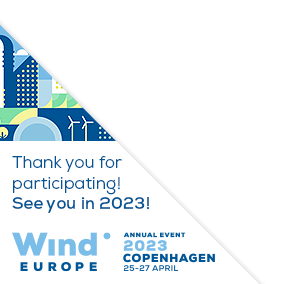Posters
Siblings:
ProceedingsProgrammeSpeakersPostersContent PartnersGlobal Markets TheatreWindTalks for InnovationProgramme Committee & Abstract ReviewersSpeaker's DashboardCome meet the poster presenters to ask them questions and discuss their work
Check the programme for our poster viewing moments. For more details on each poster, click on the poster titles to read the abstract. On Wednesday, 6 April at 15:30-16:15, join us on Level 3 of the Conference area for the Poster Awards!
PO196: How aviation restrictions impede repowering potentials
Henrik Wielert, Project and Sales Manager, Nefino GmbH
Abstract
In the upcoming years, one of the biggest challenges facing the European wind energy industry will be increasing numbers of ageing wind farms and one of the biggest opportunities will be their subsequent use to the greatest possible extent. Today, more than 14 GW of the European wind fleet is more than 20 years old. By 2030, another 116 GW will reach the end of their design lifetime. Since greenfield potentials are decreasing due to restrictive minimum distance regulations, there is a need for extensive repowering of the established sites. To date, less than 2 GW of rated output has been repowered across Europe. This correlates with the increasing minimum distances. Furthermore, increasing conflicts with civil and military aviation will occur, since larger turbine technologies threaten the allocated and protected airspace. At many established sites, this leads to the fact that the repowering old wind turbines by new wind turbines with up to 250 m height can fail more often because of vertical (aviation) minimum distances. However, the involvement of aviation planning authorities in the approval process for new wind turbines often takes place very late in planning a wind turbine and can lead to construction bans or height restrictions. In this context the minimum vectoring altitude (MVA) is particularly of relevance. The MVA describes the lowest altitude above sea level that can be used for radar guidance of flights in instrument flight procedures. However, modern wind turbines are increasingly threatening the obstacle clearance, revealing building height restrictions that greatly reduce the economic viability of a project or even prevent its implementation. This study uses a GIS analysis to numerically underpin and visualize the increasing problem of building height restrictions from MVA to highlight the need for early resolution conflicts between aviation and wind energy to ensure the energy transition.










Follow the event on: